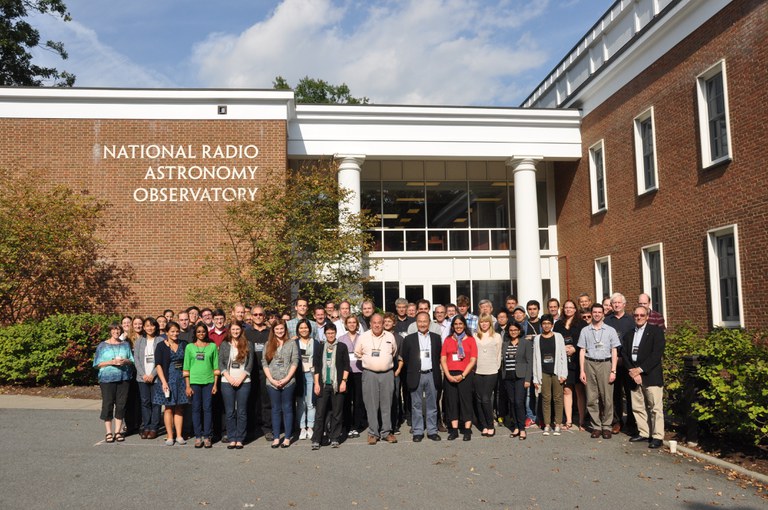Observational Evidence of Gas Accretion onto Galaxies?

Image credit: Bill Saxton, NRAO
PRESENTATIONS ARE AVAILABLE HERE
Observational Evidence of Gas Accretion onto Galaxies?
A North American ALMA Science Center (NAASC) Workshop
October 9-10, 2015
NRAO Headquarters, 520 Edgemont Road
Charlottesville, Virginia
Focus of the workshop:
Based on theoretical expectations and simulations in the framework of the standard ΛCDM model, "baryonic infall into dark matter haloes" is a widely accepted basic process in the formation and evolution of galaxies. Nevertheless, we are mindful that "The importance of gas infall is as clear from numerical simulations as it is obscure to observations." (Sanchez Almeida, J., et al, 2014)
So, the workshop will focus on examining direct observational evidence of the putative process of concentrating the baryon content of the universe into dark haloes, by reviewing
(1) the latest observations on the IGM and CGM at different redshifts (largely from quasar absorption lines), filaments in the IGM (from emission of the large scale diffuse ionized gas), the intra-cluster medium (from X-ray/UV/OIR and high resolution SZE measurements), and neutral IGM (HI, CO, NH+, CII, ...),
(2) the exchange of gas (of all phases) between the IGM/CGM and the galaxies/haloes (actual accretion and outflow) in the general field, group and cluster environments and in the larger structure of filaments, and
(3) the future directions of observations, in order to delineate observationally the important processes of mass exchange between galaxies and the IGM, using ALMA, Jansky VLA, HI intensity mapping, EoR HI pathfinders, CO intensity mapping, SKA/NBT, OIR telescopes, UV/X-ray missions, etc. Very importantly, should there be special purpose instruments or telescopes/missions considered to facilitate the necessary observations of accretion onto galaxies?
The workshop will not focus on the intricacies of numerical simulations and their predictions, but will review the basic physical processes and theoretical expectations from simulations that current and future observations would meaningfully confront.
Format:
The format of the 2-day NAASC workshop will aim at a number of invited talks (20m + 5m Q&A) to guide the discussions of relevant questions to be addressed. Contributed abstracts will be solicited, and the SOC will select a subset for oral presentations (10m + 5m). The rest of the accepted abstracts will be posters.
In order to have active participation by everyone attending, there will be hour-long discussions by the entire workshop audience (chaired by 2 conveners). PI of all the posters will make a 1m presentation (Poster Flash) just before each of the discussion sessions. The coffee and lunch breaks will be long, to encourage poster viewing and discussions.
Workshop Dates and Deadlines:
Registration Opens - June 1, 2015
Call for Abstract Titles - June 1, 2015
Abstracts Due - CLOSED
Registration closes - September 17, 2015 (or when full)
Final Scientific Program - September 8, 2015
Hotel Reservation Deadlines: Various, see Logistics
Workshop - October 9-10, 2015




Connect with NRAO